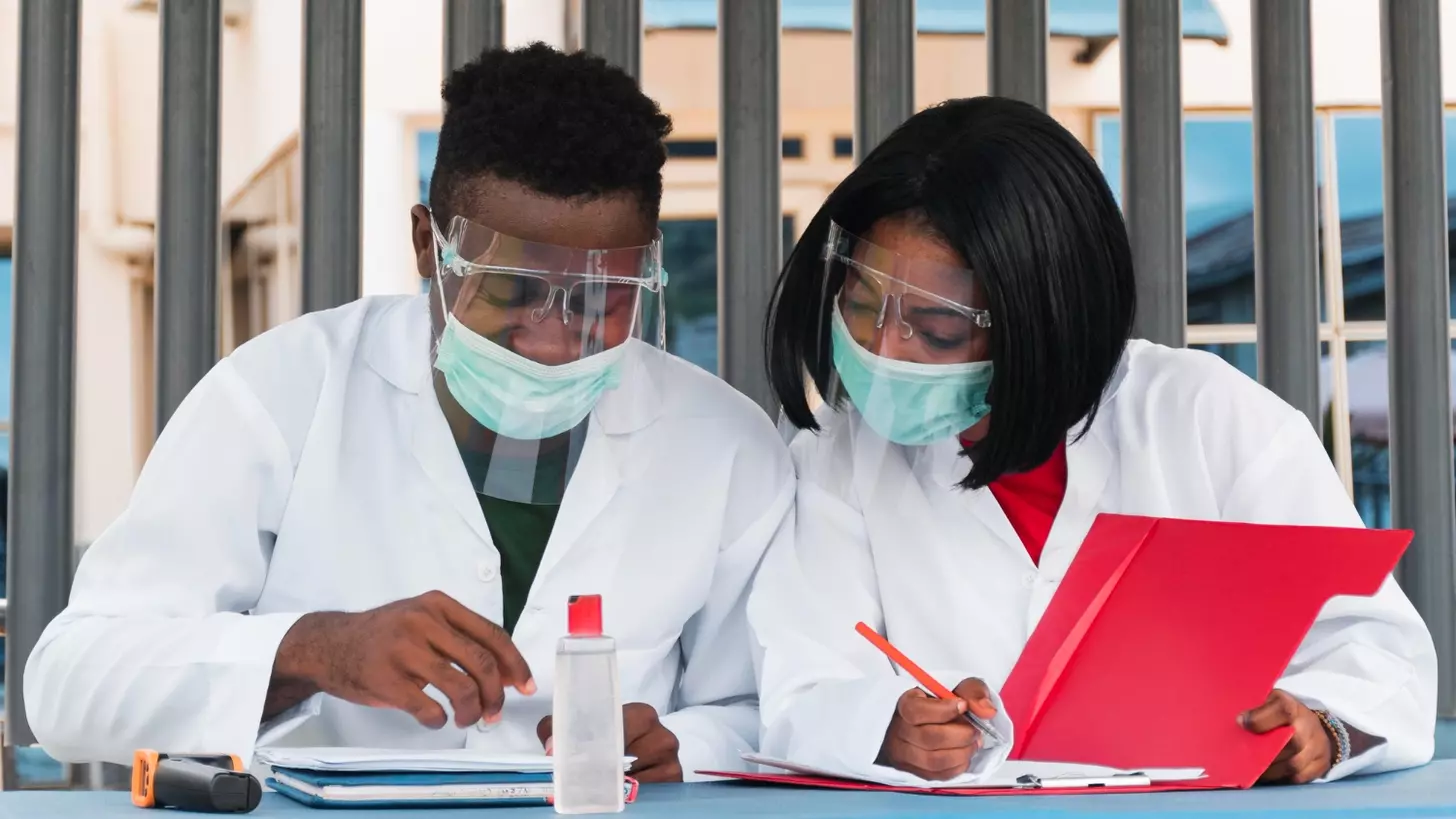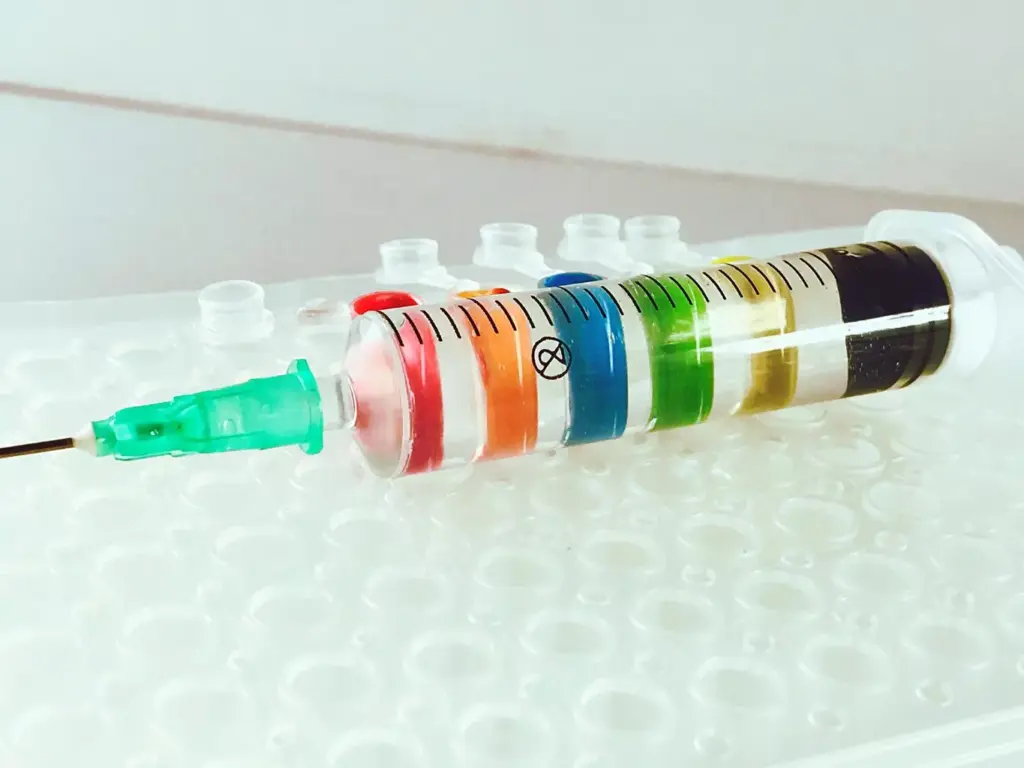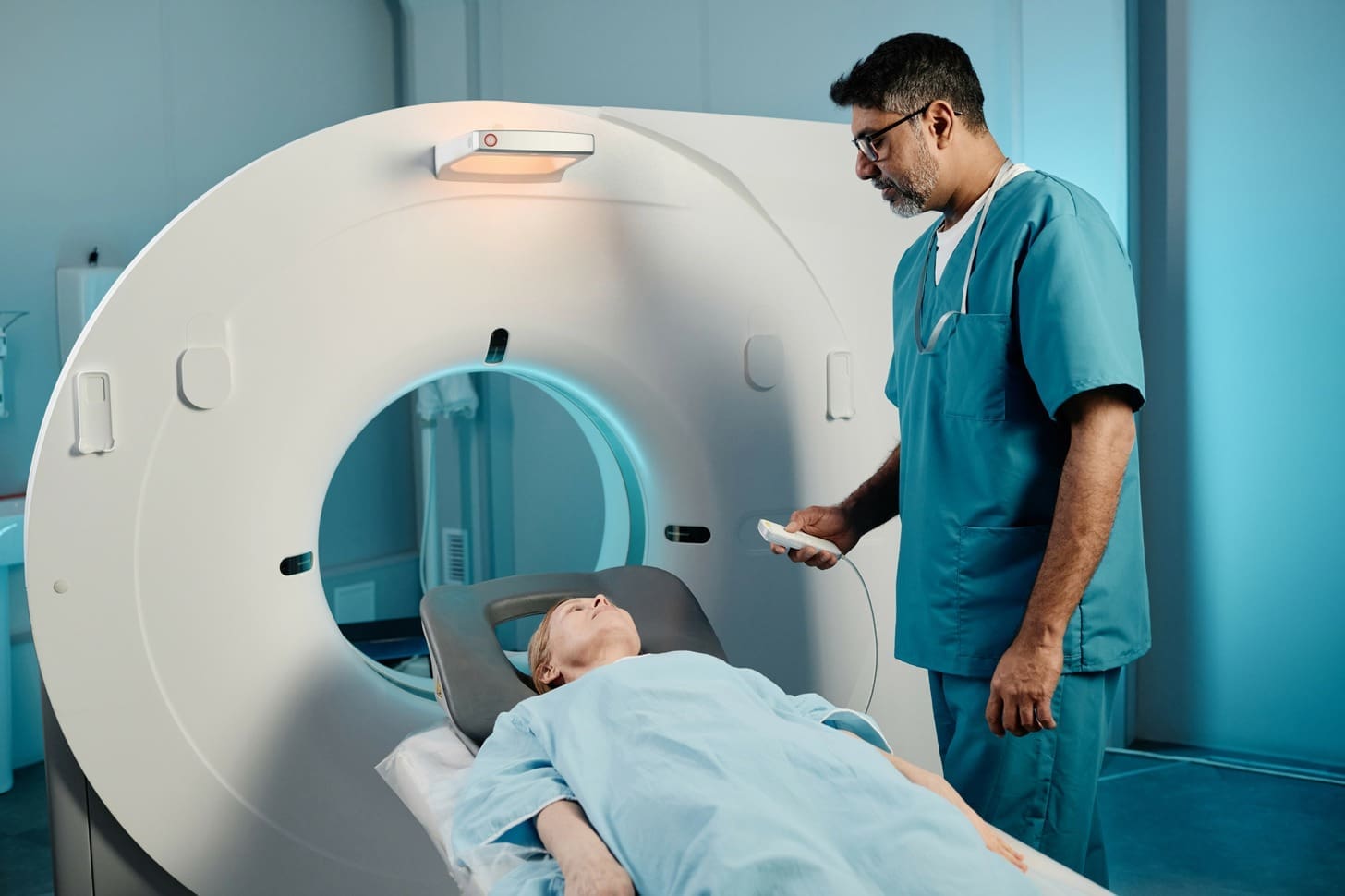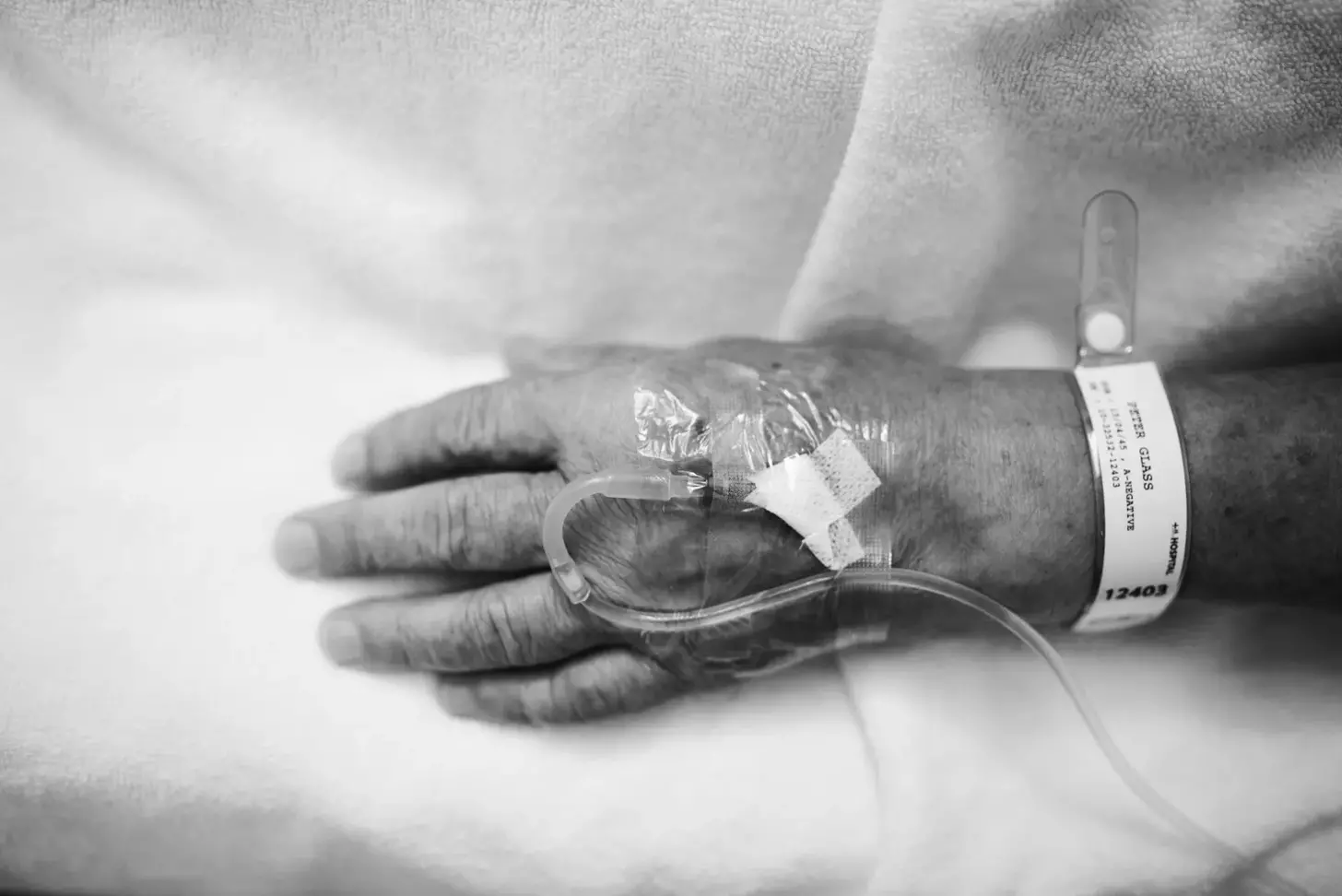Last Updated on November 26, 2025 by Bilal Hasdemir

Choosing the right chemotherapy regimen is key for breast cancer patients. TC chemotherapy mixes Taxotere (docetaxel) and Cytoxan (cyclophosphamide). It’s a top choice for those who can’t take anthracyclines.
At Liv Hospital, we know how vital it is to understand treatment options. We focus on care that’s both effective and easy to handle. TC chemotherapy is a big part of our treatment plan for early and localized breast cancer.
We’re here to share important facts about TC chemotherapy. We want to help patients make smart choices about their treatment.
Key Takeaways
- TC chemotherapy combines Taxotere and Cytoxan for effective breast cancer treatment.
- This regimen is great for patients who can’t handle anthracyclines.
- Knowing about TC chemotherapy helps patients make informed decisions about their care.
- Liv Hospital offers detailed and tailored care for breast cancer patients.
- TC chemotherapy is a widely accepted treatment for early and localized breast cancer.
What Is TC Chemotherapy for Breast Cancer?
TC chemotherapy is a common treatment for breast cancer. It combines two drugs: Taxotere and Cytoxan. This mix aims to kill cancer cells well.
Definition and Components
TC chemotherapy uses two main drugs: Taxotere (docetaxel) and Cytoxan (cyclophosphamide). Taxotere stops cells from dividing by messing with their structure. Cytoxan damages DNA in cancer cells, stopping them from growing.
Together, these drugs work better than alone. They target cancer cells in different ways. This helps lower the chance of cancer coming back and improves results for patients.
Role in Breast Cancer Treatment
TC chemotherapy is key in treating breast cancer, mainly for early-stage or localized cases. It’s often used as adjuvant therapy after surgery to get rid of any leftover cancer cells. Sometimes, it’s used as neoadjuvant therapy before surgery to make tumors smaller.
The TC regimen is effective and has fewer side effects than some other treatments. It’s important in breast cancer care because it balances being effective with being tolerable.
Understanding Taxotere and Cytoxan: The TC Combination
It’s important to know how Taxotere and Cytoxan work together in TC chemotherapy for breast cancer. Their combined action makes this treatment effective.
Taxotere (Docetaxel): Mechanism of Action
Taxotere, also known as docetaxel, is a taxane-based chemotherapy drug. It stops cancer cells from growing and spreading by blocking cell division. Taxotere binds to microtubules in cancer cells, stopping them from dividing.
Taxotere is great at stopping fast-growing cancer cells. Knowing how it works helps patients understand its role in their treatment.
Cytoxan (Cyclophosphamide): How It Works
Cytoxan, or cyclophosphamide, is an alkylating agent that damages cancer cells’ DNA. This stops them from growing and reproducing. Cytoxan’s active compounds cross-link DNA strands, making it hard for cells to replicate.
Cytoxan affects not just cancer cells but also other fast-growing cells. Yet, its impact on cancer cells makes it a key part of TC chemotherapy.
Why These Drugs Work Well Together
Taxotere and Cytoxan are effective together because they target cancer cells in different ways. Taxotere stops cell division, while Cytoxan damages DNA. This combination makes the treatment more effective.
| Drug | Mechanism of Action | Effect on Cancer Cells |
|---|---|---|
| Taxotere (Docetaxel) | Inhibits cell division by stabilizing microtubules | Halts cell cycle, leading to cell death |
| Cytoxan (Cyclophosphamide) | Damages DNA by cross-linking strands | Interferes with DNA replication and transcription, leading to cell death |
The TC chemotherapy regimen combines Taxotere and Cytoxan to fight breast cancer. Their synergy makes this combination a strong tool against cancer.
Who Is a Candidate for TC Chemotherapy?
Choosing the right patients for TC chemotherapy is key in treating breast cancer. We look at many factors to see if this treatment fits a patient’s needs.
Early and Localized Breast Cancer Patients
Those with early-stage breast cancer, mainly with small tumors, might get TC chemotherapy. It’s a good option for those who can’t handle or don’t need anthracycline treatments.
Key characteristics of suitable candidates include:
- Early-stage breast cancer diagnosis
- Localized tumors
- Inability to receive anthracycline-based treatments
Patients with Heart Concerns
For those with heart issues, TC chemotherapy could be safer. Taxotere and Cytoxan, unlike anthracyclines, are less likely to harm the heart.
Benefits for heart patients include:
- Lower cardiotoxicity risk
- Suitable for patients with pre-existing heart conditions
Other Clinical Considerations
Other things we think about include the patient’s health, their cancer’s details, and their genes.
| Clinical Factor | Consideration for TC Chemotherapy |
|---|---|
| HER2 Status | TC is often used in combination with HER2-targeted therapy for HER2-positive patients |
| Tumor Size and Grade | Larger or higher-grade tumors may require more aggressive treatment like TC |
| Patient’s Overall Health | Patients with significant comorbidities may benefit from TC due to its relatively safer profile |
The TC Protocol: Treatment Schedule and Duration
Patients getting TC chemotherapy should know what to expect. The TC protocol is a set plan that mixes Taxotere and Cytoxan in cycles.
Standard 4-Round Regimen
The usual TC chemotherapy plan includes 4 rounds of treatment. Each round is given every 21 days. This 21-day span is one treatment cycle.
21-Day Cycle Explained
In each 21-day cycle, patients get their TC chemotherapy on the first day. Then, they have a recovery period of 20 days. This lets their body rest and heal. The cycle then starts again for a total of 4 cycles.
Total Treatment Timeline
The whole TC chemotherapy treatment lasts about 12 weeks or 3 months. This time can change a bit based on how well the patient does and their health.
Knowing the treatment schedule and how long it lasts helps patients prepare. It lets them plan their lives around treatment cycles. This way, they can better understand the whole treatment time.
Adjuvant vs. Neoadjuvant TC Chemotherapy
Understanding TC chemotherapy’s role in adjuvant and neoadjuvant settings is key for effective breast cancer treatment. TC chemotherapy combines Taxotere (docetaxel) and Cytoxan (cyclophosphamide). It’s used at different stages of breast cancer management.
TC After Surgery (Adjuvant Therapy)
TC chemotherapy is given after surgery as adjuvant therapy. It aims to kill any cancer cells left behind. This reduces the chance of cancer coming back by targeting tiny cancer cells.
Adjuvant TC chemotherapy is beneficial for patients with:
- High-risk features like large tumors or lymph node involvement
- Aggressive tumor characteristics
- Cancer that has spread to the lymph nodes
TC Before Surgery (Neoadjuvant Approach)
Neoadjuvant TC chemotherapy is given before surgery to shrink the tumor. This makes surgery easier. It also shows how the cancer responds to treatment.
The benefits of neoadjuvant TC chemotherapy include:
- Potential for less extensive surgery
- Early treatment of micrometastatic disease
- In vivo assessment of treatment response
How Doctors Determine Timing
The choice between adjuvant or neoadjuvant TC chemotherapy depends on several factors. These include the cancer’s stage and characteristics, the patient’s health, and clinical considerations.
| Factors | Adjuvant TC Chemotherapy | Neoadjuvant TC Chemotherapy |
|---|---|---|
| Tumor Size and Stage | Typically used for early-stage breast cancer after surgery | Often used for larger tumors or locally advanced cancer |
| Lymph Node Involvement | Used when cancer has spread to lymph nodes | Used to shrink tumors before surgery, potentially reducing lymph node removal |
| Patient’s Overall Health | Considered for patients who are candidates for surgery first | Considered for patients who need tumor shrinkage before surgery |
Healthcare providers carefully evaluate these factors to decide when to use TC chemotherapy. This ensures it’s most effective in treating breast cancer.
Administration of Taxotere and Cytoxan
Receiving TC chemotherapy is a big step in breast cancer treatment. Knowing how it’s given is key for patients. We’ll guide you through the process, from start to finish, to make you feel more at ease and informed.
Intravenous Delivery Process
TC chemotherapy goes straight into a vein. This happens in places like chemotherapy centers or hospitals. The steps include:
- Putting in an intravenous line in your arm or hand
- Getting pre-medications to avoid side effects
- Getting Taxotere and Cytoxan over 1-2 hours
The intravenous line is watched closely to make sure everything goes right and there are no bad reactions.
Pre-Medication Requirements
Before TC chemotherapy, you’ll get pre-medications. These help prevent side effects. You might get:
- Steroids to avoid allergic reactions
- Anti-nausea meds to stop or lessen nausea and vomiting
It’s very important to follow your healthcare team’s pre-medication instructions. This helps you get ready for treatment.
What to Expect During Treatment Day
On treatment day, here’s what you’ll see:
- Registration and getting ready: Arrive early for paperwork and setup.
- Getting the intravenous line: A nurse will put it in your arm or hand.
- Getting pre-medications: Your healthcare team will give you these as needed.
- Getting Taxotere and Cytoxan: These drugs will be given over 1-2 hours.
- Monitoring: Your health will be watched closely during treatment.
We know chemotherapy is tough, and we’re here to help. Knowing what to expect with Taxotere and Cytoxan makes your treatment journey easier and more confident.
Common Side Effects of TC Chemotherapy
It’s important for breast cancer patients to know about the side effects of TC chemotherapy. This treatment is effective but can cause various side effects. Some of these can be quite significant.
Short-Term Side Effects
Short-term side effects of TC chemotherapy can be tough but usually don’t last long. Common ones include:
- Fatigue: Feeling very tired or weak, lasting a few days after treatment.
- Nausea and Vomiting: Medications can help manage these symptoms.
- Hair Loss: Hair loss is common, but hair usually grows back after treatment.
- Neutropenia: A decrease in white blood cells, increasing the risk of infection.
Long-Term Considerations
While many side effects are short-term, some can last longer or appear later. Long-term side effects include:
- Neuropathy: Numbness, tingling, or pain in the hands and feet, which can be persistent.
- Menopausal Symptoms: Early menopause or menopausal symptoms can occur.
- Cardiac Effects: Though rare, there can be long-term effects on heart function.
Managing Neuropathy and Hand-Foot Syndrome
Neuropathy and hand-foot syndrome are significant side effects that need careful management. For neuropathy, treatments may include medications to alleviate pain and discomfort. Hand-foot syndrome can be managed by:
- Keeping Hands and Feet Cool: Avoiding hot water and using cool compresses.
- Moisturizing: Regularly applying moisturizer to prevent dryness.
- Avoiding Pressure: Reducing pressure on sensitive areas.
Neutropenic Fever and Infection Risk
Neutropenic fever is a serious side effect of TC chemotherapy, occurring when a patient has a low neutrophil count and develops a fever. Managing this risk involves:
- Monitoring Temperature: Regularly checking for fever.
- Seeking Immediate Medical Attention: If a fever develops, patients should seek care promptly.
- Preventing Infections: Practicing good hygiene, such as frequent handwashing.
By understanding these side effects and how to manage them, patients can better navigate TC chemotherapy. This helps maintain their quality of life during treatment.
Effectiveness of TC Chemotherapy for Breast Cancer
TC chemotherapy is a powerful treatment for breast cancer, giving hope to patients everywhere. It has shown success in many clinical studies. These studies highlight its high success rates and survival benefits.
Success Rates and Clinical Outcomes
TC chemotherapy targets and kills cancer cells well. Clinical trials show it boosts survival rates and disease-free survival. It’s most effective in early-stage breast cancer, reducing recurrence risk.
Its side effects are manageable. This means most patients can finish their treatment without big breaks.
Completion Rate Statistics
Most patients complete TC chemotherapy. Studies show its completion rate is as good as, or better than, other treatments. This is key to its success.
| Treatment Regimen | Completion Rate (%) | Average Survival Benefit (Months) |
|---|---|---|
| TC Chemotherapy | 85-90 | 24-30 |
| AC-T Regimen | 80-85 | 20-25 |
| CMF Protocol | 75-80 | 18-22 |
Survival Benefits
TC chemotherapy offers big survival benefits. It shrinks tumors and kills cancer cells. Patients see lower recurrence and metastasis risks, leading to better long-term results.
The benefits last beyond treatment, improving life quality and expectancy.
TC Chemotherapy vs. Other Breast Cancer Regimens
In the world of breast cancer treatment, TC chemotherapy is just one of many options. AC-T and CMF are also common choices. It’s important to compare these treatments to find the best one for each patient.
Comparison with AC-T Regimen
TC and AC-T are both used to treat breast cancer. The main difference is in their ingredients. TC has Taxotere and Cytoxan, while AC-T has Adriamycin, Cytoxan, and Taxotere. Adriamycin in AC-T can increase heart risk, making TC safer for those with heart problems.
A study showed TC and AC-T have similar survival rates. But, TC has fewer side effects like heart failure. This makes TC a good choice for those at heart risk.
Comparison with CMF Protocol
The CMF protocol, with Cyclophosphamide, Methotrexate, and Fluorouracil, is an older treatment. CMF is less effective than TC, mainly for aggressive cancers.
Yet, CMF might be chosen for some patients. It depends on the patient’s situation and cancer type.
When TC Is Preferred Over Other Options
TC is often chosen for those at heart risk or wanting fewer side effects. TC’s lack of anthracyclines lowers heart damage risk. This makes it safer for many.
TC’s effectiveness and side effect profile make it a favorite among doctors. Choosing TC should be based on the patient’s needs and a detailed talk with their doctor.
Preparing for TC Chemotherapy: What Patients Should Know
Before starting TC chemotherapy, patients need to know what to do. This includes preparing and finding support. Knowing this can help lower anxiety and make treatment easier.
Before Treatment Begins
There are steps to take before starting TC chemotherapy. Following your doctor’s instructions is key. Don’t hesitate to ask questions.
- Get any tests or evaluations your doctor recommends.
- Tell your doctor about your medical history and past treatments.
- Check your medications with your doctor to avoid bad interactions.
Support Systems and Resources
A strong support system is vital during TC chemotherapy. Family, friends, and support groups offer emotional and practical help.
| Support System | Description | Benefits |
|---|---|---|
| Family and Friends | Emotional support and practical help | Reduced stress, improved mental well-being |
| Support Groups | Connecting with others undergoing similar experiences | Shared understanding, coping strategies |
| Counseling Services | Professional guidance for emotional and psychological challenges | Improved mental health, coping mechanisms |
Financial Considerations
TC chemotherapy can be expensive. Understanding costs and looking for financial help can ease the financial strain.
Patients should talk to their healthcare provider or a financial advisor about:
- The total cost of treatment, including medications and other expenses.
- Insurance coverage and any costs you’ll have to pay yourself.
- Financial assistance programs or resources that might be available.
Life During TC Chemotherapy: Practical Tips
Going through TC chemotherapy can be tough, but there are ways to keep your life good. It’s key to focus on daily tasks, eating right, staying active, and keeping your mind strong. This helps make the treatment easier.
Managing Daily Activities
When you’re on TC chemotherapy, you need to adjust your daily life. Prioritizing tasks and breaking them down helps save energy. It’s also important to establish a routine with regular breaks to avoid getting too tired.
Getting help from family and friends for things like shopping and cooking is a big help. Using delivery services for food and groceries is also a good idea.
Nutrition and Exercise Recommendations
Eating well is key when you’re on TC chemotherapy. Focus on nutrient-rich foods like fruits, veggies, whole grains, lean proteins, and healthy fats. Drinking lots of water is also important.
Exercise can help with side effects. Try gentle activities like walking, yoga, or light stretching. But always talk to your doctor before starting any new exercise.
Emotional Well-being Strategies
Keeping your emotional health up is as important as your physical health during TC chemotherapy. Support groups offer a community and understanding from others going through the same thing.
Doing things that help you relax, like meditation or hobbies, can reduce stress. Staying in touch with loved ones through calls, chats, or visits is also good for your mental health.
By using these tips, patients on TC chemotherapy can handle their treatment better and keep a good quality of life.
Conclusion: The Future of TC Chemotherapy in Breast Cancer Treatment
TC chemotherapy is a key treatment for breast cancer. It combines Taxotere and Cytoxan. This mix has shown great promise in boosting survival rates and cutting down on recurrence.
The future of TC chemotherapy is bright, thanks to ongoing research. We can look forward to better treatment plans. This could lead to even better results for patients.
Advances in breast cancer treatment are making TC chemotherapy more effective. Doctors can now tailor treatments to fit each patient’s needs. As we learn more about breast cancer, TC chemotherapy might be used in new ways for certain patients.
The future of TC chemotherapy is exciting, with new therapies on the horizon. Targeted and immunotherapies could make TC chemotherapy even more effective. We’re dedicated to keeping up with these advancements. This way, we can give our patients the best care possible.
FAQ
What is TC chemotherapy?
TC chemotherapy is a treatment that combines two drugs. These are Taxotere (docetaxel) and Cytoxan (cyclophosphamide). It’s used to fight breast cancer.
How does TC chemotherapy work?
Taxotere and Cytoxan work together to kill cancer cells. Taxotere stops cells from dividing. Cytoxan damages the DNA of cancer cells, stopping them from growing.
Who is a candidate for TC chemotherapy?
Early-stage breast cancer patients might get TC chemotherapy. So do those with heart issues or can’t handle anthracyclines.
What is the standard TC chemotherapy protocol?
The standard treatment includes 4 rounds, each lasting 21 days. This makes the whole treatment about 12 weeks long.
How is TC chemotherapy administered?
TC chemotherapy is given through an IV. Patients might get pre-medications to avoid allergic reactions. It’s given in hospitals or clinics.
What are the common side effects of TC chemotherapy?
Side effects include hair loss, fatigue, nausea, and neuropathy. Patients might also get hand-foot syndrome and neutropenic fever.
How can I manage the side effects of TC chemotherapy?
Eat well, drink lots of water, and rest. Talk to your healthcare team about managing side effects. They can help with medications for neuropathy and hand-foot syndrome.
Is TC chemotherapy effective in treating breast cancer?
Yes, TC chemotherapy is effective against breast cancer. It has high completion rates and survival benefits.
How does TC chemotherapy compare to other breast cancer regimens?
TC chemotherapy is good for those who can’t handle anthracyclines or have heart issues. It’s compared to AC-T and CMF and is a good option.
What can I do to prepare for TC chemotherapy?
Build a support system and understand the treatment. Manage your finances and follow your healthcare team’s advice on getting ready.
How can I maintain my quality of life during TC chemotherapy?
Manage your daily life, follow nutrition and exercise advice, and focus on your emotional well-being.
What is the dosage of Taxotere and Cytoxan in TC chemotherapy?
Dosage varies based on body size and health. Your healthcare team will decide the best dosage for you.
Can I receive TC chemotherapy if I have a history of chemotherapy?
Yes, you might be eligible for TC chemotherapy even with a history of chemotherapy. It depends on your situation and the healthcare team’s assessment.
References
- Cancer Research UK. (n.d.). Retrieved from https://www.cancerresearchuk.org/about-cancer/treatment/drugs/tc
- Living Beyond Breast Cancer (LBBC). (n.d.). Retrieved from https://www.lbbc.org/about-breast-cancer/treatments/chemotherapy/common-regimens/tc-taxotere
- National Center for Biotechnology Information (NCBI) / PubMed Central. (n.d.). Retrieved from https://pmc.ncbi.nlm.nih.gov/articles/PMC4000576/
- Northern Cancer Alliance (NHS). (2018). Docetaxel Cyclophosphamide (TC) Breast protocol. Retrieved from https://www.northerncanceralliance.nhs.uk/wp-content/uploads/2018/11/Docetaxel-Cyclophosphamide-TC-Breast-protocol-BOO2-CRP09-v1.5.pdf
- eviQ Cancer Treatments Online. (n.d.). Breast Adjuvant TC – Docetaxel and Cyclophosphamide. Retrieved from https://www.eviq.org.au/medical-oncology/breast/neoadjuvant-adjuvant/24-breast-adjuvant-tc-docetaxel-and-cyclophospham








